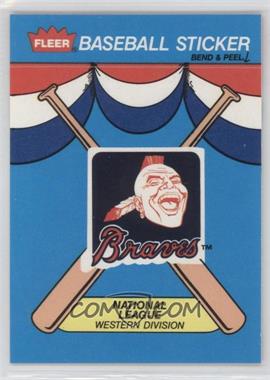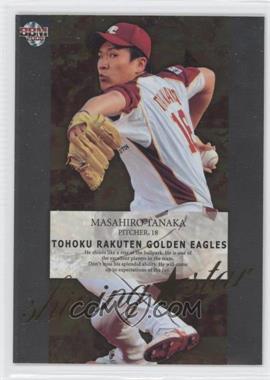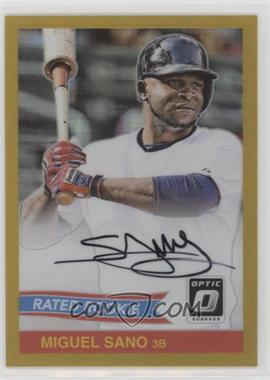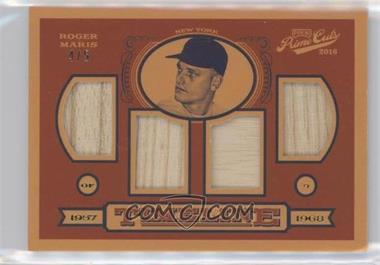Big Chips... eh, Nachos Grande recently asked the question: What's the worst part about card collecting? This isn't really a blog bat around (that comes tomorrow), but I figured I should chip in my two cents.
First, El Grande listed off a few things that could be pet peeves, so let's address those.
Short prints. I am a multi-faceted collector, with sets being one of those. Short prints can be very irritating, depending on their rarity and complication. Really, when push comes to shove, aren't all inserts and hits short prints? What once were subsets nestled within the regular base set are now shiny rarities printed in limited quantities. I guess since they generally are numbered separately from the base set most people forget those. Anyway, I ignore short prints in many sets; some of my complete sets have them, while others don't.
Gimmicks. I love gimmicks. But like short prints, they can't be impossible to obtain. A card of a squirrel? Okay, but I am not paying $100 for it. Variations? Okay, but I'm not paying $100 for them. If they're part of the base set, I can ignore them completely, since they don't fit in my type collection.
Error cards. If they aren't real, don't they become gimmicks? Real error cards can be fun just for the novelty, but not the scarcity. I have one of the 1990 Donruss reverse negative errors and the "Rick Face" error card as well. Sometimes, I might chase errors or variations for a complete set, but I can pick and choose.
Big and small sets. I love big base sets. I want sets with all of the players. Not every set needs 900 cards, but it is nice to have definitive records on cardboard. Topps Total was a wonderful thing, though since it didn't have a huge profit margin Topps dumped the concept after a short while. As for the smaller sets, I'm happy with the 400ish-card sets like Gypsy Queen and Allen & Ginter, and even the 100-200-card sets like Donruss and Goodwin Champions. Depending on the concept and the goal, any set size is okay.
Parallels. Okay, this one can be irritating. Much of Playoff's and Panini's products from this century have been overdone with parallels. At least one of Panini's sets has parallels, parallels of the parallels, inserts, parallels of those inserts, and variations of those inserts (number of players, relics, number of relics, autographs, etc) with parallels of their own. But other than my type collection, I can take them or leave them.
No more "premiums" in the packs. I do miss getting packs with team logo stickers (Fleer, Upper Deck), puzzles (Donruss), and... okay I can pass on the gum. Hey, why doesn't Donruss, which is a retro-based brand, have puzzles? Anyway, these kiddie things were fun, but have now been replaced with the inserts. What I really miss, however, are cards inserted in with food. I doubt we'll ever see tobacco with trading cards again, but I miss cards in cereal and candy. There has been some promise in this area, since cards showed up in pizza in the US last year, and with sausage here in Japan!
9-pocket pages. Yes, having too many types can make the OCD in me go off, but I managed. I generally stuck with the same type per binder, and along those lines, I generally got the same type most of the time.
No, those could be good or bad. But what really bothers me?
Well, I was going to go with meaningless insert sets. But it seems like Topps has been doing better with that; this year's flagship inserts generally have some sort of focus. In Japan, though, inserts are just shiny images of players on colored background with a remotely clever title related to the team's location, name, colors, or mascot. Each set here seems to have a set of 9 or 18 inserts just because they have to. But that isn't the worst.
No, it's the continuing movement toward a higher percentage of "hits" sets in each release.
My 2016 type collection list isn't 100% complete, but for the 43 base sets I do have recorded as being released, there were 273 parallel sets, 167 insert sets, 240 parallel sets for those inserts, 350 sets with hits (autographs, relics, manu-relics), and 1080 parallel sets for those hits. Plus an additional 25 oddball sets. So for the 2178 card sets I have recorded for 2016 so far, more than 50% are hit parallels. 2015 is only slightly better.
The explosion started around around 2011, the year Panini returned to MLB cards. There's been a steady increase in the number of parallel hit sets, and in 2013 there was a massive four-fold increase in insert parallel sets as well. My type collection includes every single set ever made.
So not only do I need a 2016 Donruss Optic Rated Rookies 1984 Retro Signatures card, but I also need the aqua, black, blue, Carolina blue, gold, gold vinyl, green, hologram, orange, and red parallels. That's 10 parallels for one set. Repeat for 1985, 1986, 1987, and 1989. So Donruss Optic's five Rated Rookies Retro Signatures sets have 50 parallels between them.
Just as a comparison, 2016 Stadium Club, which is a similarly-priced brand (at least, MSRP), has a total of 33 sets. Total. With five autograph sets and six parallel hit sets.
I guess I could say Panini is the worst part about card collecting, but that's not fair. I like getting the Donruss flagship set and Diamond Kings every year. There have been some intriguing releases in the past (Cooperstown and Golden Age, for example).
Unfortunately, since Panini apparently only really focuses on the high-end collector (Flawless, Immaculate, Pantheon, Prime Cuts), there's not much left for me to get behind. And with complicated releases with dozens of parallel hits, my type collection might need some rethinking. And that's what really bothers me. Don't get me wrong, Prime Cuts looks beautiful. But I can't afford to fill my collection with 1000 cards like this every year.
As an everyday collector, it's easy to ignore all of these parallels. Even as a player collector, I do that. For Jose Altuve, I just chase after his base and insert cards, and keep parallels whenever they fall into my lap. But the completist type collector wants these cards.

![2001 Topps Heritage - [Base] #405 - Mike Piazza - Courtesy of COMC.com](https://img.comc.com/i/Baseball/2001/Topps-Heritage---Base/405/Mike-Piazza.jpg?id=a812ff38-760b-4fa7-91c0-875c097154bb&size=original)
![2012 Topps - [Base] #93.2 - Skip Schumaker (Rally Squirrel) - Courtesy of COMC.com](https://img.comc.com/i/Baseball/2012/Topps---Base/932/Skip-Schumaker-(Rally-Squirrel).jpg?id=70783adf-84c5-4c63-a2ad-fc668e96782b&size=original)
![1989 Fleer - [Base] #616.1 - Bill Ripken (FF on Bat Knob) - Courtesy of COMC.com](https://img.comc.com/i/Baseball/1989/Fleer---Base/6161/Bill-Ripken-(FF-on-Bat-Knob).jpg?id=fc838b41-e83f-4033-9cd8-0e0b1c390063&size=original)
![2002 Topps Total - [Base] #2 - Derek Jeter - Courtesy of COMC.com](https://img.comc.com/i/Baseball/2002/Topps-Total---Base/2/Derek-Jeter.jpg?id=cff9e3a5-cff3-4435-a872-4192d8167294&size=original)
![1992 Topps - [Base] - Gold #1 - Nolan Ryan - Courtesy of COMC.com](https://img.comc.com/i/Baseball/1992/Topps---Base---Gold/1/Nolan-Ryan.jpg?id=721c8078-f365-434c-9453-c3f0b14c94ae&size=original)


![2015 Panini Immaculate Collection - [Base] - Blue #142 - Rookie Autos Blue - Buck Farmer /49 - Courtesy of COMC.com](https://img.comc.com/i/Baseball/2015/Panini-Immaculate-Collection---Base---Blue/142/Rookie-Autos-Blue---Buck-Farmer.jpg?id=d9008682-a9e4-4865-924a-e6a2775fbe57&size=original)

![2014 Panini Golden Age - [Base] #SP-84 - Jacqueline Kennedy - Courtesy of COMC.com](https://img.comc.com/i/Baseball/2014/Panini-Golden-Age---Base/SP-84/Jacqueline-Kennedy.jpg?id=66d8108f-488c-4f39-80ef-85649ce8d937&size=original)

No comments:
Post a Comment